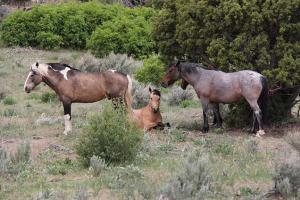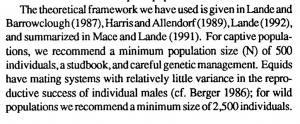
Wild Horses And American Wilderness Deserve Ecologically Appropriate Management
Wild Horse Fire Brigade believes Colorado Governor Polis should use his Executive Power to halt BLM plans for The Little Book Cliffs wild horse roundup
YREKA, CALIFORNIA, USA, July 10, 2024 /EINPresswire.com/ -- The Little Book Cliffs herd area in the state of Colorado is located to the north of the populated town of Palisade, and to the northeast of Clifton, Fruitvale and Grand Junction Colorado. These towns are extremely vulnerable to catastrophic wildfire. Any large landscapes of managed wildfire fuels that border these vulnerable towns is a hugely valuable consideration in regard to the health, safety and welfare of the citizens of these towns as well as the property at risk, and costs for wildfire suppression.MORE from the insurance industry analysts at AM BEST here: https://www.ambest.com/video/video.aspx?s=1&rc=wildhorses323
Clearly, maintaining the wildfire fuels on the landscape of the Little Book Cliffs area using an environmentally friendly herbivore, such as the resident Little Book Cliff horses, makes for a very logical and cost-effective wildfire fuels management argument.
Nevertheless Doug Vilsack, the Colorado Bureau of Land Management ('BLM') State Director wants to pursue what many wild horse experts feel is an illogical and unreasonable roundup and waste of American taxes. Under NEPA Number: DOI-BLM-CO-G010-2024-0007-EA, the roundup has the Project Name: 'Little Book Cliffs Wild Horse Range Management'.
Peggy Coleman-Taylor, a long-time Colorado resident wild horse advocate and member of the Wild Horse Fire Brigade Advisory Board said, "this proposed roundup flies in the face of all the work and money that was spent by Gov. Jared Polis and lawmakers to create the Colorado Wild Horse Working Group "
Peggy Coleman-Taylor's opinion seems well supported by a recent article in the Colorado Sun: https://coloradosun.com/2024/07/08/wild-horse-working-group/
Science supported facts:
"Horses re-seed the plants and grasses they consume while contemporaneously managing grass and brush wildfire fuels, whereas ruminant herbivores (cattle, sheep, goats, deer) digest most of the seeds they consume. No other large herbivore on the North American continent is capable of this kind of symbiotic, natural range management, which is also very cost-effective", said Michelle Gough - wild horse researcher and board member of Wild Horse Fire Brigade.
More information at this EIN News release: https://www.wboy.com/business/press-releases/ein-presswire/620446849/american-wild-horses-are-understudied-that-results-in-grossly-overlooked-ecological-benefits/
According to the Bureau of Land Management's webpage (https://www.blm.gov/visit/little-book-cliffs-wsa):
The Little Book Cliffs wild horses have a diversity of colors, band sizes and ages. Through the introduction of wild horses from other herds, the range of colors within the herd is exciting and photogenic. Horses include palominos, paints, grays, blacks, bays, sorrels, blue and red roans as well as a few appaloosas. In recent years, a curly was also introduced and has since foaled. Band sizes range from two to 10 horses. Due to high public visitation, the wild horses are less skittish than other horses, so photo opportunities are ideal.
"The loss of the foregoing 'photo opportunities' and related annual tourism revenues is of grave economic consequence to the local towns", said Deb Ferns, president of Wild Horse Fire Brigade, who holds an MBA and believes that the solution offered by Wild Horse Fire Brigade's proven management plan can be a cookie-cutter solution for increased tourism and wildfire fuels management in many areas, under the guidance of the highly experienced team of researchers from Wild Horse Fire Brigade, who live among and study a herd of heritage horses in a wilderness area.
In 2023, Wild Horse Fire Brigade, an all-volunteer 501-c-3 wild horse research, re-wilding and conservation nonprofit signed a 5-year contract with California State University to teach wild horse ecology-ethology and wildfire fuels management via wild horses. More here from Sacramento State University: https://www.csus.edu/news/newsroom/stories/2024/1/wild-horses-internship.html
William E. Simpson II - a former rancher-logger with wildfire experience and a long-time wild horse researcher and ethologist stated that, "the close proximity (just 8-miles) to an area that will become even more laden with wildfire fuels as a result of the loss of any of the horses, greatly increases the wildfire risk to nearby towns. Wind blown wildfires can cross and spark spot fires over 8-miles of ground in a matter of minutes. The Herd Area size of 36,113 acres can easily support the existing 200 horses with a current distribution rate of 1-horse per 180-acres."
According to the BLM's website:
The topography & vegetation are as follows: The wild horse area is characterized by four major canyon systems falling to gentle sloping plateaus covered in sagebrush and pinon juniper. Wildlife includes: Elk, turkey, mule deer, desert bighorn sheep, chuckar partridge, gamble's quail, midget faded rattlesnake, snowshoe hare, mountain lion, bobcat, bear.
Kelsey Strangebye, lawyer, award-winning equestrian and the Vice President of Wild Horse Fire Brigade said: "The BLM's suggested Appropriate Management Level ('AML') of 90-150 horses is in conflict with the population management guidelines found on page-22 in the BLM's Wild Horse and Burro Management Handbook, which states: (https://www.blm.gov/sites/blm.gov/files/uploads/Media_Library_BLM_Policy_H-4700-1.pdf)
"4.4.6.3 Herd Size"
"A minimum population size of 50 effective breeding animals (i.e., a total population size of about 150-200 animals) is currently recommended to maintain an acceptable level of genetic diversity within reproducing WH&B populations (Cothran, 2009). This number is required to keep the rate of loss of genetic variation at 1 percent per generation. Animal interchange between adjacent HMAs with smaller population sizes may reduce the need for maintaining populations of this size within each individual HMA. Research has not yet established a recommended minimum breeding herd size for burros."
However, what is considered by many scientists as the more reliable data from the International Union for Conservation of Nature Species Survival Commission recommends minimum populations of 2,500 individuals in a connected area for the conservation of genetic diversity.
Given the risks for catastrophic wildfire and the approximation of communities that border this area, removing these horses presents an unreasonable risk to the health, safety, and economic welfare of the local American citizens.
Wild Horse Fire Brigade believes that the honorable Colorado Governor Jared Polis should use his power as Governor and issue an Executive Order to call a halt to this proposed roundup.
Public Information (https://www.nga.org/governors/powers-and-authority/) about the use of Executive Orders and Executive Power provides the following information:
"The authority for Governors to issue executive orders is found in state constitutions and states as well as case law or is implied by the powers assigned to state chief executives."
Colorado Governor Polis has the power and authority to stop the proposed roundup to protect the health, safety and welfare of the people of the affected communities from the grave dangers presented by the impending risk of catastrophic wildfire and exposure to toxic smoke.
William E. Simpson II, who is also the Executive Director of Wild Horse Fire Brigade has written a letter to Governor Polis urging him to immediately take action, and issue an Executive Order halting the planned BLM roundup, at least and until additional in-depth research and comments from local city and town officials, business leaders, chambers of commerce and affected citizens can fully weigh-in to the issue.
#WildHorses #LittleBookCliffs #IStandWithWildHorses #SaveWildHorses #SaveOurWildHorses #WHFB
William Simpson
Wild Horse Fire Brigade
email us here
Visit us on social media:
Facebook
X
LinkedIn
Instagram
YouTube
Preserving the Genetic Diversity of Wild Horses is Critical - Only Nature can accomplish that task properly
EIN Presswire does not exercise editorial control over third-party content provided, uploaded, published, or distributed by users of EIN Presswire. We are a distributor, not a publisher, of 3rd party content. Such content may contain the views, opinions, statements, offers, and other material of the respective users, suppliers, participants, or authors.




